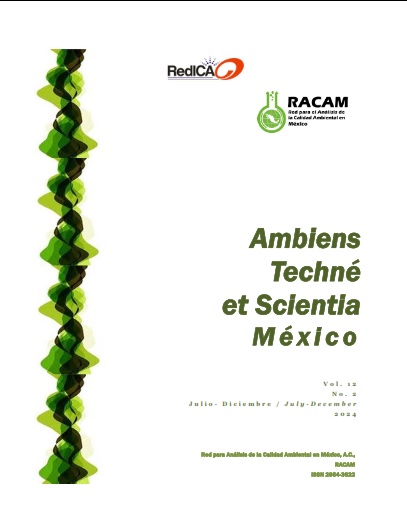Sustainable innovation in the food industry: Evaluation of fruit dehydration with geothermal energy
Keywords:
Food preservation, geothermal dehydrator, bromatological analysisAbstract
Currently, food dehydration is recognized as one of the most effective methods for preservation. This technique not only extends shelf life but also ensures a more consistent availability of nutritious foods under various conditions and markets. The development of new preservation methods has gained relevance as efforts are made to improve efficiency and sustainability. As a result, a geothermal food dehydrator (DGA) was designed, built, and installed at the geothermal power plant Domo San Pedro in Nayarit, and this work focuses on presenting the results of dehydrated mango and guava. The objective of this research was to evaluate the microbiological, bromatological, and sensory quality of keitt mango (Mangifera indica L.) and yellow guava (Psidium guajava), establishing comparisons with fresh samples. The microbiological evaluation covered aerobic mesophilic bacteria, total coliforms, fecal coliforms, and yeasts and molds, while texture was measured using a TA-XT2i texturometer from Stable Micro Systems Ltd., Surrey, UK, with the Texture Expert EXCED® software, and color analysis was performed using the scale established by the Commission Internationale d´Eclairage (CIE, L*, a*, b*) with a Minolta CM-3600d spectrophotometer. Additionally, the sensory attributes of the samples were outlined using the modified Flash Profile method. The results showed that both fresh and dehydrated fruits possess microbiological qualities that meet established standards. Regarding the sensory profile, fresh mango was evaluated based on 18 attributes, while dehydrated mango was assessed with 37 attributes, defined as appearance homogeneity, color, brightness, fiber content, cohesiveness, flexibility, odor intensity, specific mango aroma, fresh mango flavor, and immature notes. The sensory profile of fresh guava was analyzed using 22 attributes, while dehydrated guava was evaluated with 37 attributes, highlighting aspects such as color, brightness, seed presence, granularity, chewiness, adhesiveness, fresh note, characteristic guava aroma, flavor, and metallic aftertaste. Instrumental texture analysis of dehydrated mango indicated that the three batches produced by the iiDEA® group (Institute of Engineering, Desalination, and Alternative Energies), responsible for developing the geothermal dehydrator, were statistically different from each other, while guava samples exhibited similarities. Colorimetric parameters L*, a*, and b*, relative to reference values for fresh guava and mango, showed that both dehydrated specimens presented color changes. It was observed that fruits dehydrated with the application of geothermal energy retained several sensory attributes of fresh products, particularly sweet tones, adhesiveness, flexible texture, aroma and flavor, brightness, and a pronounced spicy taste.
Downloads
Downloads
Published
Issue
Section
License
Copyright (c) 2024 Ambiens Techné et Scientia México

This work is licensed under a Creative Commons Attribution-NonCommercial 4.0 International License.



